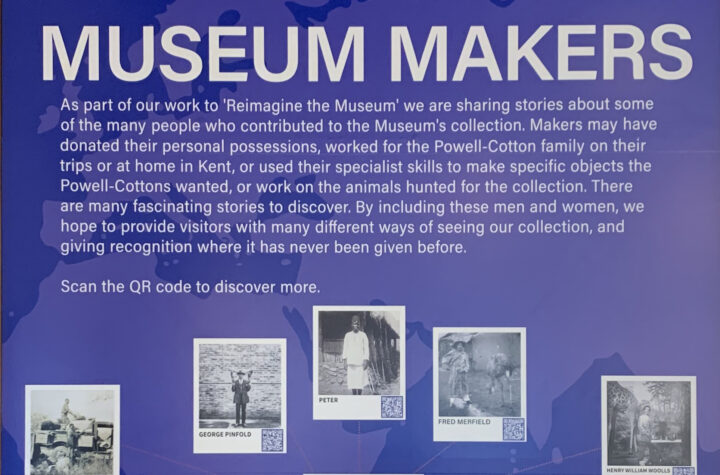
When I found out that the Headley Fellowship scheme had opened up to freelance curators in the summer of 2021, I knew I wanted to apply, and I knew immediately that the museum I wanted to approach was the Powell-Cotton. It is an extraordinary collection, almost entirely collected by one family, and run by members of that family until 2006. The team now running the museum are dedicated to reimagining the museum – decentring the family and decolonising museum practice, guided by their vision ‘people matter’.
Who are, and who have been, the people of the Powell-Cotton Museum?
The museum has historically told the story of Major Percy Horace Gordon Powell-Cotton and his family. It once advertised itself as ‘the largest known collection of big game shot by one man’. Of course, in reality, all the specimens and trophies in the Powell-Cotton Museum were not shot by Percy Powell-Cotton. His various hunting trips required caravans of dozens of men employed to track, hunt, and skin the animals, as well as to act as interpreters and middle-men, to cook for the camp and to carry equipment. Once the skins arrived in the UK, many more hands were involved before they reached the museum, notably renowned taxidermist Rowland Ward and his team. The museum itself had a staff including a curator, as well as private secretaries to the Powell-Cottons who typed up their field notes and correspondence.
I knew from previous work on the Making African Connections project (a partnership project led by the University of Sussex which involved the PCM as well as Brighton Museum where I was freelancing at the time) that the Powell-Cottons were remarkable in that they recorded the names of many of the people they worked with, as well as those who made the objects that they collected, and those who they photographed. One of the many frustrations in the state of museum documentation is that so often, non-white and non-European people are not named.
As part of the museum’s reimagining project, they have been telling more of the stories of the people who worked with the Powell-Cottons to create the collection. For my research project I wanted to build on this work by making sure that these contributions were recognised in the museum’s cataloguing practice and record-keeping, in addition to the popular Museum Makers posts which staff had started sharing on social media.